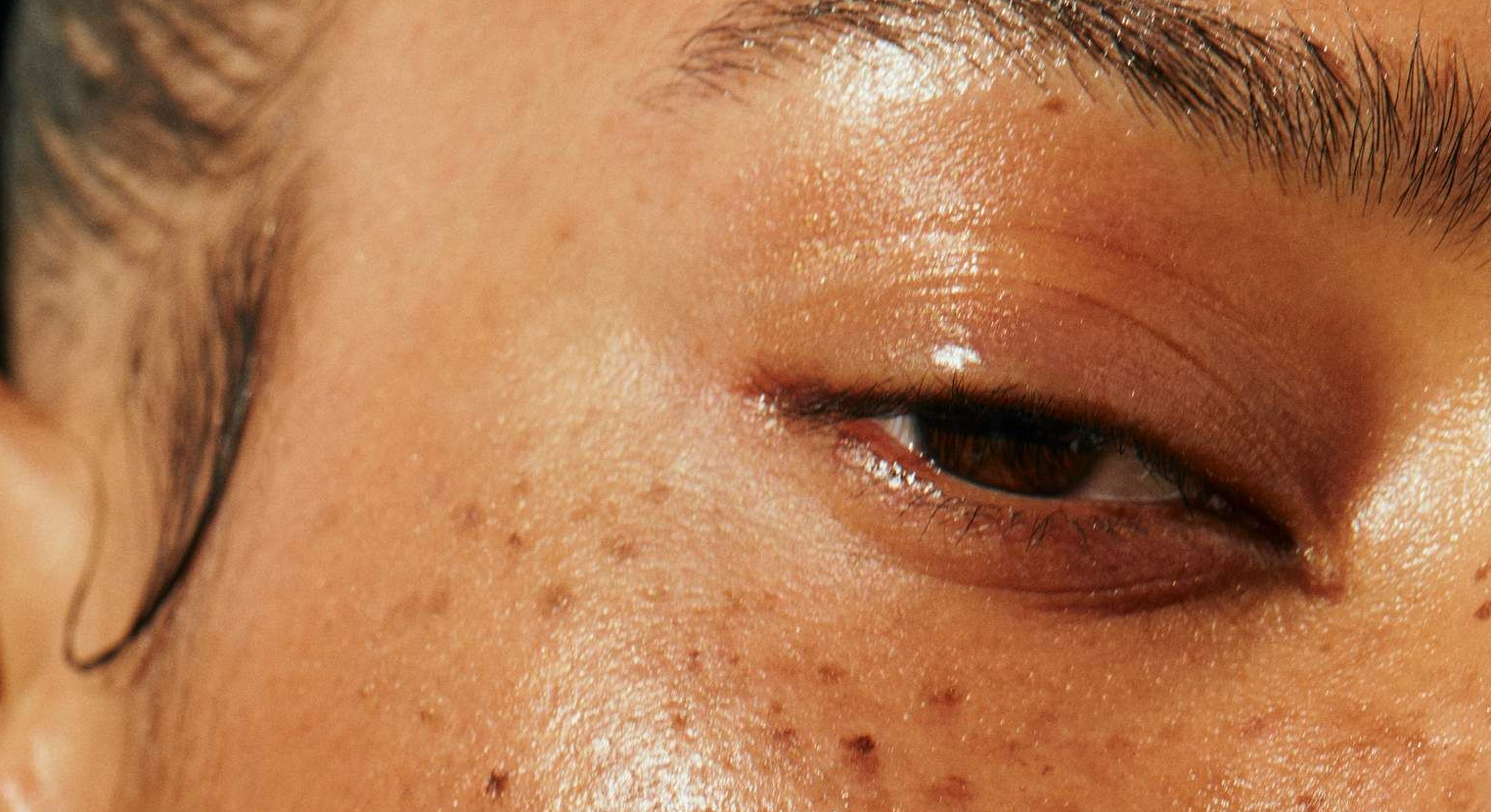WHAT IS HYPERPIGMENTATION?
Hyperpigmentation is a common skin condition that is not harmful to skin health. Hyperpigmentation isclassified as patches of darker skin compared to the surrounding skin area [1]. Patches of hyperpigmentation areusually found on areas of the skin that are commonly exposed to the sun - such as the face, hands and feet [1]. Other causes of dark spots could be from post-acne marks, freckles or scars.
WHAT CAUSES HYPERPIGMENTATION?
Hyperpigmentation is caused by the production of melanin. Melanocytes are a type of cell that lie underneath the basal level of skin [2]. The primary function of melanocytes is to produce melanin.Melanin is what causes pigment to the skin, whether by genetics or UV exposure from the sun. Melanin acts as built in sunscreen, protecting the skin from potentially harmful sun exposure [2].
Other ways to induce melanin production could be some medications like chemotherapy, hormone changes such as pregnancy and diseases [3]. One example is Addison’s Disease, which is characterized as an overproduction of melanin in areas of skin that are commonly exposed to sunlight: face, hands, feet, arms, etc.
TYPES OF HYPERPIGMENTATION
Hyperpigmentation comes in several forms:
- Melasma: Melasma isthe type ofhyperpigmentation that forms during hormonal changes like pregnancy [3]. Melasma hyperpigmentationmost commonly occurson the stomach and the face. The American Academy of Dermatology determines that about 90% of melasma cases occur in women [4].
- Sunspots: Sunspots, also called liver spots, arecaused by long-term exposure to sunlight [3]. Although these spots can look like cancerous lesions, they are medically harmless. If you do not like the sight of sunspots, you can receive cosmetic skin lightening treatments.
- Post-inflammatory hyperpigmentation: Hyperpigmentationcaused by injury and inflammation is called post-inflammatory hyperpigmentationand is most commonly associated with acne [3]. Acne scars are hyperpigmentation marks caused bythe inflammatory consequence of acne.
GENETICS AND HYPERPIGMENTATION
Genetic profiles and ethnic backgrounds can play a role in melanin production and increase the risk of hyperpigmentation. One population that sees an increased risk of hyperpigmentation is the Latin population [5].The Latin population, or those with darker skin colors, can be more prone to hyperpigmentation because it takes more melanin production to protect against UV damage or post-inflammatory events like acne [6].
Therefore, regular sunscreen usage becomes critical for every skin type to prevent further skin damage and hyperpigmentation marks.
Sources:- https://www.aocd.org/page/Hyperpigmentation
- Yousef H, Alhajj M, Sharma S. Anatomy, Skin (Integument), Epidermis. 2021 Jul 26. In: StatPearls [Internet]. Treasure Island (FL): StatPearls Publishing; 2021 Jan–. PMID: 29262154.
- https://www.healthline.com/health/hyperpigmentation#causes
- https://www.healthline.com/health/melasma
- https://www.byrdie.com/hyperpigmentation-latin-skin
- Perez M, Luke J, Rossi A. Melasma in latin americans. J Drugs Dermatol. 2011;10(5):517-523.
